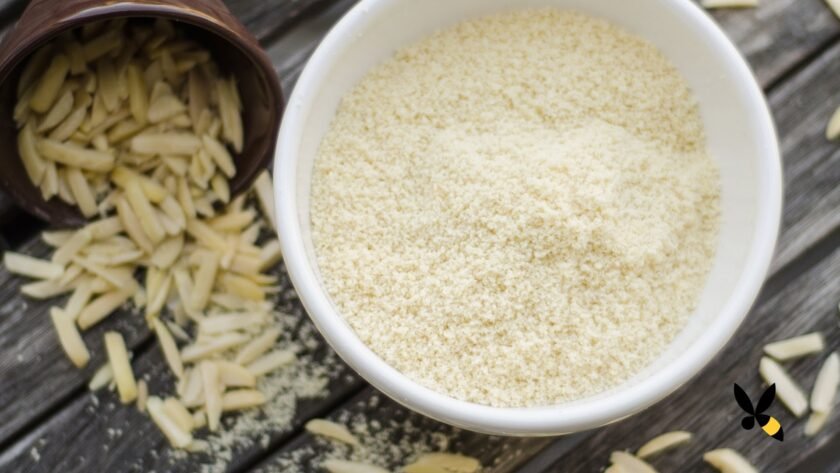Almond flour is made from cold-pressed raw whole almonds. Naturally gluten-free, it has a low level of carb, but it’s rich in protein, fibre, vitamins, minerals and antioxidants. It also is an healthy alternative to wheat flour and ground almonds in baking and cooking. It can be a good alternative for people who for various reasons will not or cannot eat wheat flour, for example persons who suffer from celiac disease.
Almond flour is the right choice even of people who care about a good nutrition and consider it as a healtier alternative. A good processed almond flour contains the same healthy fatty acids as almonds, but in smaller quantities. In best qualities of almond flour over 80% of the fat from the almonds is removed by cold-pressing, to make it more suitable as flour. This also reduces the calorie content by 53% compared to regular almond flour, and the shelf life is also improved.
Nutritional values
100 g almond flour contains: 293 kcal 40 g proteins 8 g carbohydrates 11 g fat, of which 1 g saturated fat 33 g fibre. It could cover a very high portion of the daily requirements for these vitamins and minerals: Magnesium 96%; potassium 46%; calcium 30%; vitamin b2 52%.
Baking with almond flour
Whenever you use flour, you can also use almond flour. Almond flour behaves a little differently compared to regular flour because it lacks gluten. Gluten makes it possible for yeast dough to rise as the gluten forms a network of small walls that hold gas trapped in the dough. Gluten also acts as a binder in the dough and makes it easier to handle. When baking with yeast, you can replace 10-20% of the wheat flour with almond flour. You should then also increase the amount of liquid by about 5-10%. When not baking with yeast, you can replace up to 100% of the flour. As almond flour has such a high fiber content, it will soak up more liquid, up to twice as much as other types of flour. You should therefore reduce the amount of almond flour to 50-60% of the original amount of flour, or increase the amount of liquid in the recipe. Be aware that when baking with 100% almond flour, the dough sticks together less well than dough with flour. A tip is to add a binder such as Xanthan Gum.
Click here if you want to know a delicious recipe with almond flour. Flour Academy chose it for you!
Thanks to sukurin.com for this page




